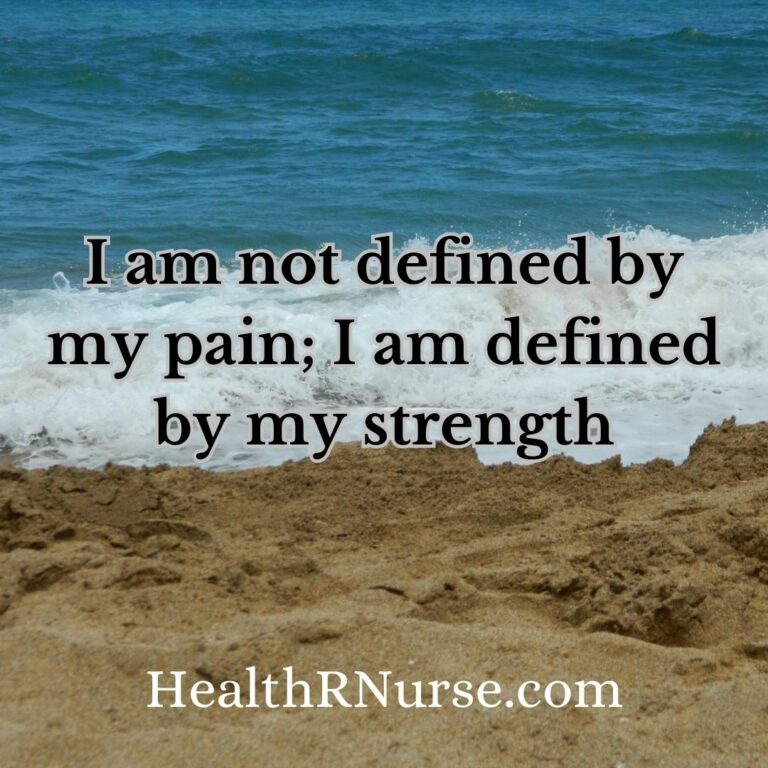
The Ultimate Guide to Coping with Chronic Pain: Strategies for Improved Quality of Life
1. Introduction
Welcome to “The Ultimate Guide to Coping with Chronic Pain: Strategies for Improved Quality of Life.”
As someone who personally understands the challenges of living with chronic pain, I want you to know that you are not alone in this journey. I, too, face the daily struggles of chronic pain caused by transverse myelitis, chronic headaches, and other medical conditions that cause me pain. I’m here to share valuable tips and practical coping strategies that have helped me improve my quality of life despite the obstacles.
Chronic pain can affect various aspects of our lives, making even the simplest tasks seem overwhelming.
I want to talk about the impact of chronic pain on our physical, emotional, and social well-being, and how embracing a positive mindset can make a world of difference. I’ll share my coping strategies and tips, that have brought relief and joy to my own pain management journey.
I work a full-time job while dealing with chronic pain and I understand the challenges and struggles it brings. I hope that the tips and strategies I share can empower you to navigate your pain journey with greater strength and resilience, enabling you to lead a fulfilling life despite the obstacles.
Please remember that while my tips may be helpful; it is important to seek guidance from your healthcare provider to create a personalized pain management plan that suits your unique needs and condition.
“I am not defined by my pain; I am defined by my strength.”
Sincerely,
Melissa
2. Understanding Chronic Pain
Chronic pain is more than just physical discomfort; it can have a profound impact on your emotional and mental well-being.
Chronic pain is pain that last 3-6 months or longer and there are many conditions that can cause it.
It is essential to acknowledge the complexities of chronic pain and its effects on various aspects of life. By understanding its nature, you can begin to explore ways to manage and cope with it effectively.
3. The Impact of Chronic Pain on Quality of Life
Living with chronic pain is an experience that extends far beyond the physical discomfort it brings.
- Physical Limitations: Chronic pain can lead to significant physical limitations, hindering a person’s ability to engage in daily activities.
- Emotional Well-Being: Dealing with persistent pain can take a toll on a person’s emotional health. Feelings of frustration, sadness, anger, and helplessness are common with chronic pain.
- Sleep Disturbances: Chronic pain can disrupt sleep patterns, making it challenging to get restful and rejuvenating sleep. Sleep disturbances not only affect energy levels and cognitive function but can also intensify pain sensitivity, creating a vicious cycle of pain and sleep deprivation.
- Social Isolation: The constant struggle with chronic pain can lead to social isolation as individuals may withdraw from social activities and gatherings due to pain-related discomfort.
- Mental Health: Chronic pain is often linked to mental health issues such as depression and anxiety. The emotional burden of pain and its impact on daily life can contribute to a decline in mental well-being.
- Work and Productivity: Chronic pain can affect a person’s ability to work or perform daily tasks efficiently. Absenteeism or decreased productivity.
- Financial Burden: The cost of managing chronic pain, including medical treatments, medications, and therapies, can place a significant financial burden.
- Impact on Relationships: Chronic pain can strain relationships with family, friends, and romantic partners. Loved ones may struggle to understand the extent of the pain or the adjustments needed to accommodate the condition.
- Loss of Enjoyment: Chronic pain can steal away the joy and pleasure that individuals once found in activities they loved. Hobbies, may become challenging or even impossible, leading to a sense of loss and frustration.
- Sense of Identity: Chronic pain can reshape a person’s sense of self. Previously active and vibrant individuals may find themselves identifying more with their pain and limitations, affecting their self-esteem. For a period of time I was no longer my happy confident self. I have to admit I am not as confident as I used to be.
4. Coping Strategies for Chronic Pain Management
Lifestyle Changes and Self-Care: Making positive lifestyle changes can significantly impact your ability to cope with chronic pain. Some of the changes I made includes exercising and stretching regularly, using a tens unit, using ice and heat, (ice works really well for headaches) wearing comfortable shoes, even eating better, I found that eating gluten and bread I was in more pain than when I eat healthy.
Physical Therapy and Exercise: Engaging in tailored physical therapy and exercise programs can be beneficial for managing chronic pain. They may even use ultrasound massage to trigger points which has been helpful for me. Exercise can improve your flexibility, strengthen muscles, and increase mobility and it also triggers the release of endorphins, which are natural pain-relievers.
Mind-Body Techniques: Mind-body techniques, such as meditation, mindfulness, and deep breathing exercises, can effectively reduce pain perception and improve coping mechanisms. in addition to this I also have to take a time out from stress by stopping what I am doing, change my environment and just sit in quiet and take slow deep breaths.
Accept and Learn: After I was diagnosed with transverse myelitis, it took me a while to understand that my pain would be lifelong. Pain used to control my life, but I eventually accepted it and began researching how to cope with chronic pain. While educating myself, I started paying close attention to my triggers and learned more about the condition, its triggers, and the treatments available.
- Stay physically active: By engaging in regular physical activity, as guided by your healthcare provider. It may seem intimidating at first, especially when pain used to make me fearful of activity, fearing further injury. However, I came to realize that exercise, stretching, and staying physically active were the keys to improving flexibility and strength, as well as managing my pain effectively.
- Find Support: Connect with support groups or seek counseling to share experiences and coping strategies with others who understand chronic pain.
- Balance Activities: Take your time and divide tasks to make them more manageable in order to avoid overexertion and making your pain worse.
- Healthy Eating and Hydration: Consume a balanced diet, including anti-inflammatory foods, and maintain proper hydration for overall health. I have noticed that if I do not drink enough water my headaches are worse
- Limit Tobacco and Alcohol: Avoid smoking and excessive alcohol consumption, as they can worsen chronic pain.
- Set Achievable Goals: Establish realistic goals and celebrate milestones to stay motivated on the pain management journey.
- Seek Professional Help: When pain becomes overwhelming, consider seeking assistance from pain management specialists, physical therapists, or mental health professionals.
5. How a Positive Mindset Affects Chronic Pain
Chronic pain can be a challenging and distressing experience, impacting various aspects of a person’s life. However, research suggests that cultivating a positive mindset can play a significant role in how individuals perceive and cope with chronic pain. Embracing positivity and adopting an optimistic outlook can help reduce stress and anxiety, which are known to exacerbate pain sensations. Moreover, a positive mindset can enhance the body’s natural pain-relieving mechanisms, leading to improved pain tolerance and a greater sense of well-being.
When individuals with chronic pain focus on positive aspects of life, engage in mindfulness practices and maintain a hopeful attitude, they may experience reduced pain intensity and improved overall mood. Positive emotions can trigger the release of endorphins, the body’s natural painkillers, providing a sense of relief and promoting relaxation. Additionally, cultivating positive social connections and seeking support from loved ones can create a supportive environment that contributes to better pain management.
It’s important to note that a positive mindset does not eliminate chronic pain but rather complements traditional pain management approaches. By incorporating positive thinking into their coping strategies, individuals can empower themselves to navigate the challenges of chronic pain with greater resilience and a more optimistic outlook on life.
6. Conclusion
In conclusion, as someone who faces the daily challenges of chronic pain. I wholeheartedly understand the impact it has on your life. Through this comprehensive guide, I aim to provide you with practical strategies and insights that have personally helped me cope with these conditions. Remember, you are not alone on this journey, and I encourage you to share your thoughts and experiences in the comments below. Let’s create a supportive community where we can exchange valuable tips and encourage one another in our pain management efforts. Together, we can navigate the complexities of chronic pain with strength, positivity, and hope, and improve our quality of life.

